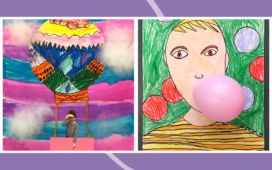
The Importance Of Inclusive Onboarding
Diversity and inclusion in the workplace aren’t just trendy topics. They are fundamental principles that can significantly impact an organization’s culture, performance, and overall success. You may hear these terms thrown around a lot, but what do they really mean, and why should you care? Diversity is the mix of people in your workplace. This includes differences in race, gender, age, religion, sexual orientation, abilities, and so on. Inclusion, though, is a bit different. It’s not just about having a diverse group of people but making sure that everyone feels welcome and valued.
When you bring together people from different backgrounds, you get a mix of perspectives. This diversity brings creativity, which leads to innovative solutions that you may never have thought of otherwise. Plus, when you have a team that looks at a problem from multiple angles, you’re more likely to cover all your bases, which helps with decision making. And let’s not forget about employee engagement. When people feel included, they’re more likely to be happy at work. Inclusive workplaces make people feel valued and heard, which boosts morale and job satisfaction.
When it comes to onboarding, inclusive onboarding programs make everyone feel welcome from the start. With those programs, newcomers feel like they truly belong, boosting their confidence and helping them hit the ground running. Below, we will explore all the ways you can make your onboarding program more inclusive and accepting of people from different backgrounds and experiences.
Assessing Your Current Onboarding Program
Existing Practices
You may be wondering where to start when it comes to evaluating your onboarding program. The best insights often come from those who are actually going through the process. Why not start by talking to recent hires and asking them about their experiences with onboarding? It’s important to find out if they felt welcomed and supported and if they encountered any challenges. You also want to know what they enjoyed and what could have been better. Don’t forget to get input from your HR team and other colleagues, too. Sometimes, a fresh perspective from someone who’s been around longer can help uncover things you might have missed.
Gaps
Use the feedback from the assessments above to spot specific areas where you can improve. For instance, your program might benefit from more cultural competency training, or perhaps you could use more inclusive language. Next, take a good look at your onboarding materials. Are they really representing a diverse workforce? For instance, do your training videos and manuals include people from various backgrounds? Do they show appreciation for different cultural perspectives and holidays? Another key step is to get your whole team involved. Employees can help identify things like unconscious biases in your training content or areas where accessibility for people with disabilities could be improved.
Goals
When it comes to inclusivity, setting specific goals helps everyone stay on the same page and ensures that your efforts are thoughtful and have a real impact. As an example, if you aim to have 50% of your onboarding materials translated into multiple languages within the next 6 months, that’s a clear, doable goal. It’s not just a generic idea of wanting to “be more inclusive.” Setting measurable goals also lets you keep track of progress and see what’s making a difference. Maybe you’ll notice that new hires from diverse backgrounds stay longer after implementing certain inclusive practices. That’s proof that your efforts are really paying off.
Designing An Inclusive Onboarding Program
Inclusivity In Orientation
The first day at a new job can be a bit nerve-racking for anyone, so it’s important to make sure every new hire feels valued right from the start. Let’s start by thinking about who will be leading the orientation. Having a diverse group of speakers can really set the tone and show that the company values different perspectives. It’s also essential to choose a location that is accessible to all employees, including those with disabilities. Then, think about the content. Are the materials you’re using reflective of various cultures and experiences? You must also encourage interaction and connection among new hires. Group activities, for instance, can help break down barriers and build a real sense of community. Always remember that the goal is to make everyone feel like they belong from the start.
Diversity Training
Diversity training is one of the most important aspects of building an inclusive culture. It’s not just a one-time thing but an ongoing commitment to education and awareness. First and foremost, it’s crucial to make diversity training fun and relevant. Try using real-life examples and interactive activities to show why diversity matters in the workplace. These help everyone understand what diversity is and why it’s so important. For example, role-playing exercises can be a great way to show the potential challenges of a diverse team as well as their solutions. Don’t forget to customize your training to fit your organization, considering the specific demographics and dynamics of your workforce. By doing this, you create a meaningful training program, making it easier for employees to apply what they’ve learned in their day-to-day work lives.
Leadership Training
If leaders don’t have the right skills and mindset, it becomes challenging for diversity and inclusion efforts to truly take place. Leadership training is not just about basic management skills; it’s also about creating an inclusive environment where every team member feels like they belong. This involves helping leaders understand the benefits of diversity for everyone, including the company, and training them on unconscious bias. They must also be able to recognize their own biases and actively work to overcome them. It’s also important for them to understand different cultural norms, communication styles, and work practices to foster a more inclusive atmosphere.
Mentorship Systems
When you match new hires with experienced employees, you’re giving them a go-to person for questions, advice, and support. Imagine a new hire from a different cultural background; having a mentor who truly gets their unique challenges and can offer personalized guidance can make all the difference. They can help them not only with the technical aspects of the job but also with the social ins and outs of the new workplace. A good mentorship program also benefits mentors by giving them a chance to improve their leadership skills and gain fresh perspectives. Basically, it’s a two-way exchange of knowledge and experience that enriches the entire organization.
Employee Resource Groups
By bringing Employee Resource Groups (ERGs) into the onboarding process, you create a warm and inclusive environment for new hires from all walks of life. Each group is like a little community of colleagues who share similar experiences or interests. This is especially important for those who might otherwise feel a bit lost in a new place. The ERG representatives can share their own stories, tell new hires all about the resources that are available, and invite them to join in on meetings or events. This not only shows off how inclusive your company is but also lets them know that they’ve got a supportive community in the workplace.
Support And Feedback
One thing to focus on when creating an inclusive onboarding program is providing great support and gathering feedback. It’s necessary for your new team members to feel like they have someone to turn to and that their opinions really matter. Setting up regular check-ins can help with this. These can be informal chats or more structured meetings, but the main goal is to make sure your new hires have a safe space to share their experiences and any challenges they might be facing. And remember, this support isn’t just a one-time thing; it’s ongoing. It shows that your organization truly cares about the journey of new employees and is devoted to their success. And don’t forget, feedback goes both ways. Whether it’s through surveys, feedback forms, or direct conversations, make sure to really listen to your employees’ ideas and make changes as needed.
Conclusion
If you want to create a welcoming workplace, now you know why an inclusive onboarding program is a good idea. Imagine every new hire feeling truly welcomed, respected, and valued from day one. It’s all about creating an environment where everyone can be themselves at work, which leads to more innovation and collaboration. So, don’t just talk about diversity and inclusion; take action and start making real changes. By focusing on inclusivity during onboarding, you’re not only improving the employee experience but also setting your organization up for long-term success.















